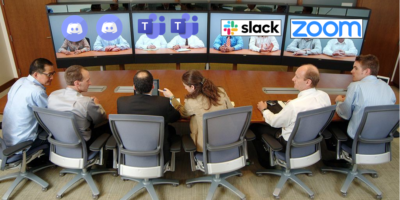I like to say that anyone who’s human is already an expert in human-centred design. We see around us many poorly designed products, processes, and organizations/structures, which I find really frustrating because all it takes is some empathy and humility to design well. Good designs lie at the intersection of technical feasibility, financial viability, and user desirability. As engineering students, we take courses looking at all three of these to some extent, but for most programs the emphasis is on the technical side. In addition, very traditional management structures separate “engineering” as the strictly technical part of a given task. Professional engineering ethics dictate a duty to society, and typically people would like to contribute personally to society as well, however this aim is constrained by the inability to do higher-level design.
The ideal human-centred design process, as used by the philanthropic arm of the legendary design house IDEO, has a few steps. First, qualitative research is used to get a basic level of understanding about different potential users. Then this research is synthesized to develop broader themes. Within this landscape, opportunities for solutions in different areas are identified, and specific products/processes are brainstormed (directly with users if possible). The best ideas are then prototyped and iterated upon to test assumptions made to overcome missing and imperfect information and interpretation. Finally, a design passes a tolerance and may be scaled up and deployed. Good processes don’t end here, and the design continues to be monitored to influence similar designs in the future. Because the process relies heavily on user input and feedback and goes through real-world testing, if followed it produces something more driven by user needs than typical engineering ways of thinking. In my job at tech startup VOTOmobile.org, I’m constantly coming back with usability feedback to our software developers who have designed based on how the languages they use. If I get them to step back and look at the product from the user perspective, they understand me, but intentionally taking that point of view is not part of their daily work routine yet.
In addition to producing more desirable designs, human-centred design can also be looked at as a political statement. Governments forming policies based on recommendations from technocrats can easily be ineffective even if they made sense on paper. Designing from the user side forces technical decisions to be made in a different way, and thus changes the way the government works and thinks. For example, classic macroeconomic theory says that unemployment insurance creates disincentives for value-adding job-seeking and entrepreneurship, increases unemployment, and results in dead weight added to the economy. However, if you are designing something the address unemployment, looking at unemployed people and potential employers as users, you might design something different. You might realize that people are looking for access to credit and mentorship to start their own businesses, or that the social pressure to be employed is a stronger motivator to work than unemployment insurance is a motivator to not work. Whatever you found, it would probably be different than the simplified, clinical theories used by policy makers and would push the government somewhere new.
Although human-centred design is powerful, it is not without limitations. For one, it limits itself to what people will say they want. This is not always the best choice, as people have imperfect knowledge and might never anticipate that going in an unexpected direction could be beneficial. Secondly, the iteration process is similarly prone to finding local optima and will typically not produce a revolutionary redesign, even if it would be beneficial. In the end, human-centred design is just one lens to use a designer, but one that typically is ignored by designers who have been raised to believe they know more about what would work for their users than their users. In the development sector, this view is pervasive, and in addition to enforcing a damaging colonial mindset, also results in ineffective projects.
There is a project just up the road from our work and living space in Kumasi, Ghana. A sign tells us that USAID, WSUP, CARE, and WaterAid are responsible for the borehole and water tower the was put up to give people access to water. However, you can immediately see that they have overlooked the drainage system necessary after water is provided, and a filthy puddle persists in the middle of the road where the gutter crosses. From the perspective of someone living there (like me) who cares about not getting diseases and wet feet, I would want to give some feedback to USAID and friends, but they have not included any contact information on their sign. What is the point of the sign anyway? I don’t even know who all these groups are or what they do. chainlink and razorwire around the bottom exacerbated the fact that I now feel like I can’t participate in the community, and toward these NGOs I feel distanced from and patronized, their water tower much higher than my house or any of the other buildings around. USAID even writes “From the people of America” on their projects, making me feel worse about not being American. In this situation, applying user-centred design to consider my feeling that I want to be involved in my community is quite revolutionary. External donors and NGOs fundamentally believe that they have better ways of doing things than they people they want to serve do (and they often do). It’s a persistent tension in development, as Eric Dudley puts it “The very idea of doing good implies an us and a them. This is an embarrassment we cannot escape.” Attention to my concerns of feeling like I have no voice builds ideas of indigenous sovereignty into the system, something that doesn’t typically come with foreign development interventions, especially in Canada where domestic indigenous sovereignty is treated with such little urgency.
Human centred-design can offer valuable new perspectives, and presents a way of legitimizing grassroots concerns to traditionally exclusive structures. As engineers or as designers in other roles, I would encourage trying the process out. A great place to start is IDEO.org’s Human-Centred Design Toolkit, available free from their website.







Leave a Reply